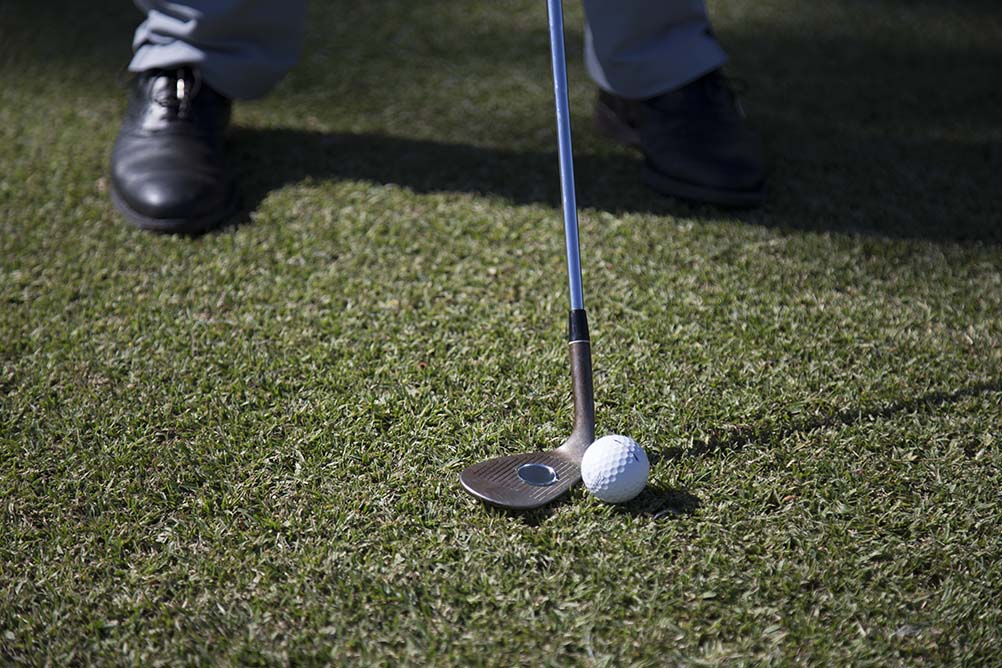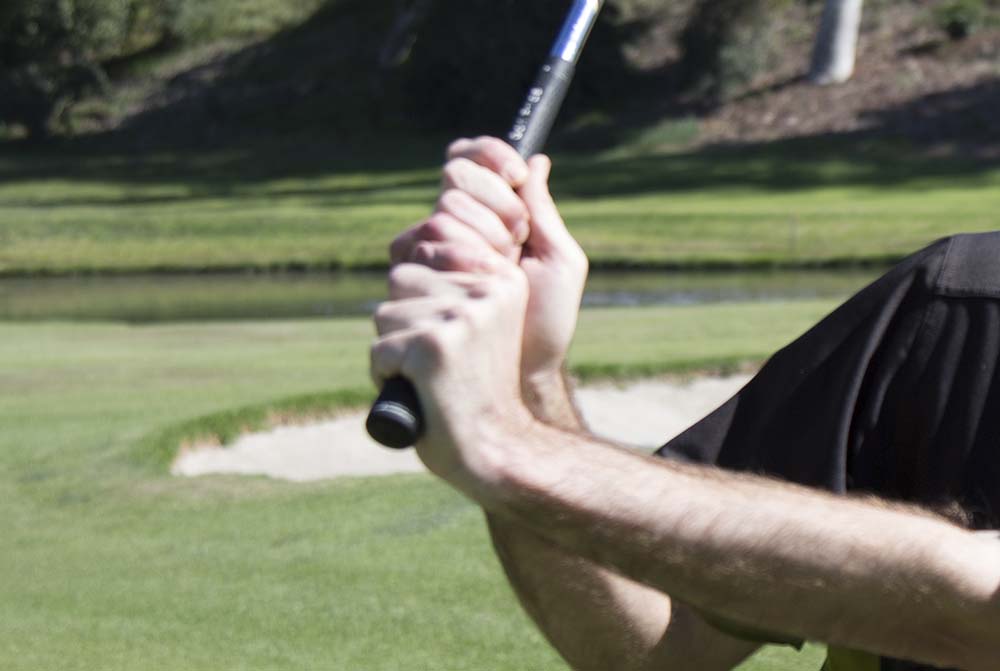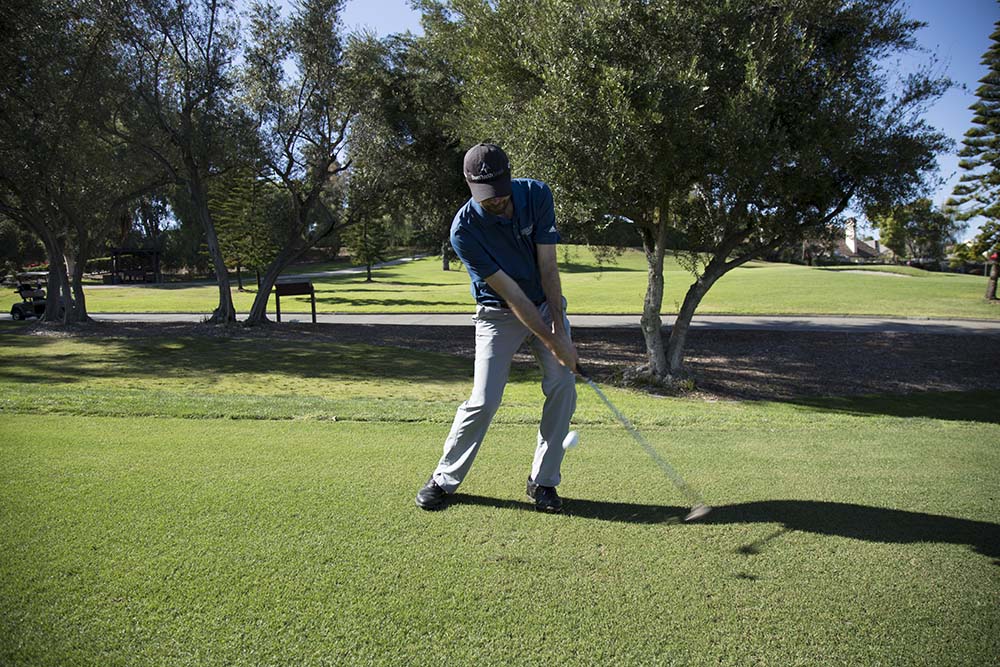You can avoid hitting flop shots if you really want to; playing around bunkers and other obstacles and running the ball in. If you shoot above 90 consistently, this may often be your best approach. But if you really want to shoot low scores, the flop shot is a must have. It is not to be feared but relished as a weapon that can save your round. If you're getting to a level in your game where you want to take on these more challenging shots, this article has your answers. We will teach you how to evaluate your lie, set up for success, and all the adjustments to make when situations change. We will help you decide when it's time to try the flop shot and when to keep it in the bag.
The Basic Technique

This basic technique should be your framework for the flop shot. Understand that this framework is based on hitting a flop shot from a level lie with the ball sitting fairly well. Also understand that situation is pretty rare. Rare enough in fact that we can't believe that most golf instruction begins and ends there. There are always adjustments to be made in any given situation. The basic concepts are more important than anything else and if you understand the framework you can make variations to your setup and technique on the fly and develop a truly versatile short game.
Open the Clubface At Address - Pancake it. Literally lay your club on the ground so you can lay a quarter on the clubface and it won't fall off. This will maximize the bounce of your golf club. After you have opened the clubface, take your normal grip. Do not do it the other way around. Once again, open the clubface, then take your grip.
Ball Forward In Your Stance - On a level lie, the ball should be an inch or two inside your left heel. Unfortunately you almost never come across a perfectly level lie. Take a few practice swings and notice where your club bottoms out in relation to your stance. You want to position the ball about 1/2 inch ahead of where your club bottoms out.
No Shaft Lean - Unlike almost every other shot in golf, you do not want your hands ahead of the ball at impact. Keep your hands even with the ball or slightly behind it at address and return them to the same spot at impact. Take a picture of your setup in your mind's eye, then try to recreate that picture at impact.

Cup Your Left Wrist - Cupping your left wrist on your backswing will open the clubface and increase bounce even further. This part of the technique is not mandatory but it can help a lot if you aren't comfortable laying the clubface wide open at address.
Slam The Bounce - When you open the clubface at address you should be able to feel the back of your golf club (the bounce) laying on the ground. The leading edge of your club will be up off the ground slightly. Your goal is to hit the ground with the bounce of your club as hard as you can; allowing you to slide the leading edge of the club under the ball without digging into the turf.

To expand on the concepts explained above, the most extreme version of the flop shot is to pancake the clubface open at address with your hands slightly behind the clubhead. Cup your left wrist on the way back and slam the bounce (back of the golf club) on the ground. But this is the extreme. All lies are slightly different and require varying degrees of this technique. The most extreme version is only occasional. As such, we expand on these basic concepts below and hopefully help you understand your situation and make the proper adjustments.
Evaluate Your Lie
This is the most important and often overlooked step for success. Your lie is everything. Your entire decision making process should begin with this simple truth. The way your ball is sitting on the grass, how much grass there is, and how firm or soft the ground is are all key considerations. Without evaluating these crucial factors you have very little chance of consistent success at the flop shot. If you don't have the proper lie to hit a flop shop you shouldn't be trying it. Period. Here are some of the various lies you may get when you're considering hitting a flop shot and how you should play them.
- Ball Sitting Up in the Rough - This is a good situation to try the flop shot. The ball is already up in the air when it is propped up by tall grass. Understand the ball is not sitting at the base of the turf. When your ball is sitting on top of the rough, the firmness of the ground doesn't matter very much. You don't need to use the bounce of your golf club because the ball isn't laying at the base of the turf. If you try to use the bounce to the extreme described in the basic technique, you will more than likely go right underneath the ball. Instead, put the ball even further forward in your stance (as far up as you would play your driver) and open the clubface about half as much as you would in the basic technique. When you swing, finish high with your hands up over your left shoulder.
- Ball Sitting Down in the Rough - For this shot, the basic technique works very well. The two major considerations are how firm or soft the ground is and how much grass is around your golf ball. The firmer the ground, the less speed is required when you swing. Less grass around your golf ball has the same effect. When the ground is soft or wet, your club will be slowed down much more and you need to swing with much more force in order to power the club through the grass. A flop shot will never go as high off of soft wet ground as it will off of firmer turf.
- Ball sitting up in the fairway - If you have a good lie, the firmness of the turf is the controlling factor. The basic technique works well for this shot but always make sure you take a few practice swings to test the firmness of the ground. The firmer the ground is, the more your club is going to bounce off of it. If you're not paying close attention, you may blade it when the club bounces off the ground. You need to make a concerted effort to keep your club traveling down through impact because the ground is going to fight you.
- Ball Sitting Down in the Fairway - Don't be a hero. You are in a situation that does not lend itself to the flop shot. If you can, play around the obstacles in front of you and live to fight another day. Opening the clubface with a bad lie in the fairway doesn't work because you cannot get the leading edge underneath the golf ball. Too many things can go wrong to attempt the flop shot from a bad lie in the fairway. If, however, you find you have no other options but to try and flop it, pretend that you are hitting an exploding bunker shot. It is very important to swing hard enough to hit the ground 2 inches behind the ball. Once again, this is extremely risky and not advised if you can avoid it.
- Uphill Lie, ball sitting up - If you are on an uphill lie and the ball is sitting up, everything is working in your favor for the flop shot. The common mistake on this shot is to open the clubface too much at address. The ball is going to automatically go higher because you are on an up-slope. The ball is sitting on top of the grass so it is already up in the air. Your job is basically already done. You don't really need to open the clubface. Set up with your clubface only slightly open or square. Put the ball up towards the front of your stance. Focus on your follow through and make sure your hands finish high up over your left shoulder. The ball will soar up into the air. You may even feel as though you are actually swinging up at the ball and that's okay. But only in this particular situation. Don't misquote us on that.
- Uphill lie, ball sitting down - As long as your lie isn't too terrible, this is still a good situation to flop it. Use the basic flop shot technique but only open the clubface about half as much as normal. You are going to have to swing with a lot of speed to get the ball to go anywhere.
- Downhill lie, ball sitting up - Flop shots are dicey to try from any sort of downhill lie but they can work if your lie is good enough. Keep your weight forward at address and your hands traveling down the slope on the follow through. You have to do this to keep the leading edge of the club down through impact. If the leading edge of the club doesn't stay down, you will blade it. Make sure you keep your weight towards your front foot and swing down the slope.
- Downhill lie, ball sitting down - Hopefully by now you have figured out that this is a no go. Sometimes you just find yourself in a bad situation with no good solution. Don't hit a flop shot from this difficult situation. Take your medicine and put your ball in a position where you can attack the next shot.